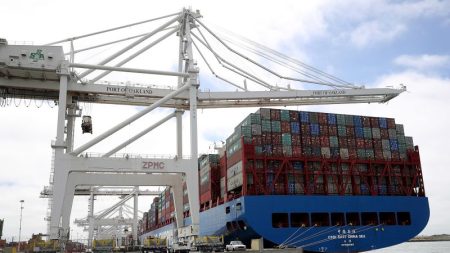Indian weddings are known for being extravagant affairs that require multiple outfit changes over several days of celebration. However, the way people pay for these outfits has drastically changed in India over the years. Brij Kishore Agarwal, a sari shop owner in Old Delhi, used to worry about cash being stolen from his store overnight. Now, almost all of his customers use e-payments to complete their purchases, making his life much easier. This shift towards digital payments has become common across India, with systems like Unified Payments Interface (UPI) allowing for instant fund transfers via QR codes. This transformation has significantly impacted daily life and has the potential to enhance India’s economic growth and inclusiveness.
The push to digitize society in India began about 15 years ago, but progress was slow until two significant events in 2016. The launch of UPI by the National Payments Corporation of India revolutionized payment infrastructure by allowing users to transfer money instantly from various banks and fintech companies without entering bank details or paying transaction fees. Additionally, the government’s decision to scrap large banknotes that year led to a surge in e-payment usage as a means to combat corruption. The adoption of digital transactions was further accelerated by the COVID-19 pandemic as people sought to minimize physical contact and reduce the spread of the virus.
Today, Indians use UPI for a wide range of transactions, from paying vegetable vendors to doctors. The number of UPI transactions surpassed 100 billion in 2023, establishing India as a major player in the digital payment space. Despite this growth, some individuals, like rickshaw driver Azeez, remain hesitant to embrace e-payments due to concerns about security and literacy. However, the trend towards digital transactions is expected to continue, with UPI targeting two billion transactions per day by 2030. This shift is not only increasing efficiency and transparency for businesses but also fostering financial inclusion and empowering citizens to participate in India’s economic growth.
The digitization of India’s economy has played a significant role in the country’s economic success, with Prasad, an economics professor at Cornell University, highlighting its impact on efficiency and transparency. Businesses like Agarwal’s sari shop have benefited from the adoption of UPI, leading to increased sales and simplified tax processes. Similarly, flower seller Kapil Sharma has seen a rise in business since implementing UPI due to its convenience for customers. The digital infrastructure in India has also contributed to an 80% financial inclusion rate, giving citizens, regardless of wealth, a stake in the country’s economic development.
Looking ahead, NPCI is focusing on expanding UPI internationally to facilitate remittances and payments for Indian citizens abroad. The potential for UPI to become a global template for digital payments is significant, with initiatives like the Eiffel Tower’s website accepting payment via UPI showcasing its international potential. Despite this global outlook, the grassroots support for UPI within India suggests that its dominance in the country will continue to grow. Individuals like Agarwal, who have experienced the benefits of digital payments, are unlikely to return to cash transactions, emphasizing the convenience and efficiency that UPI offers to both businesses and consumers in India.















